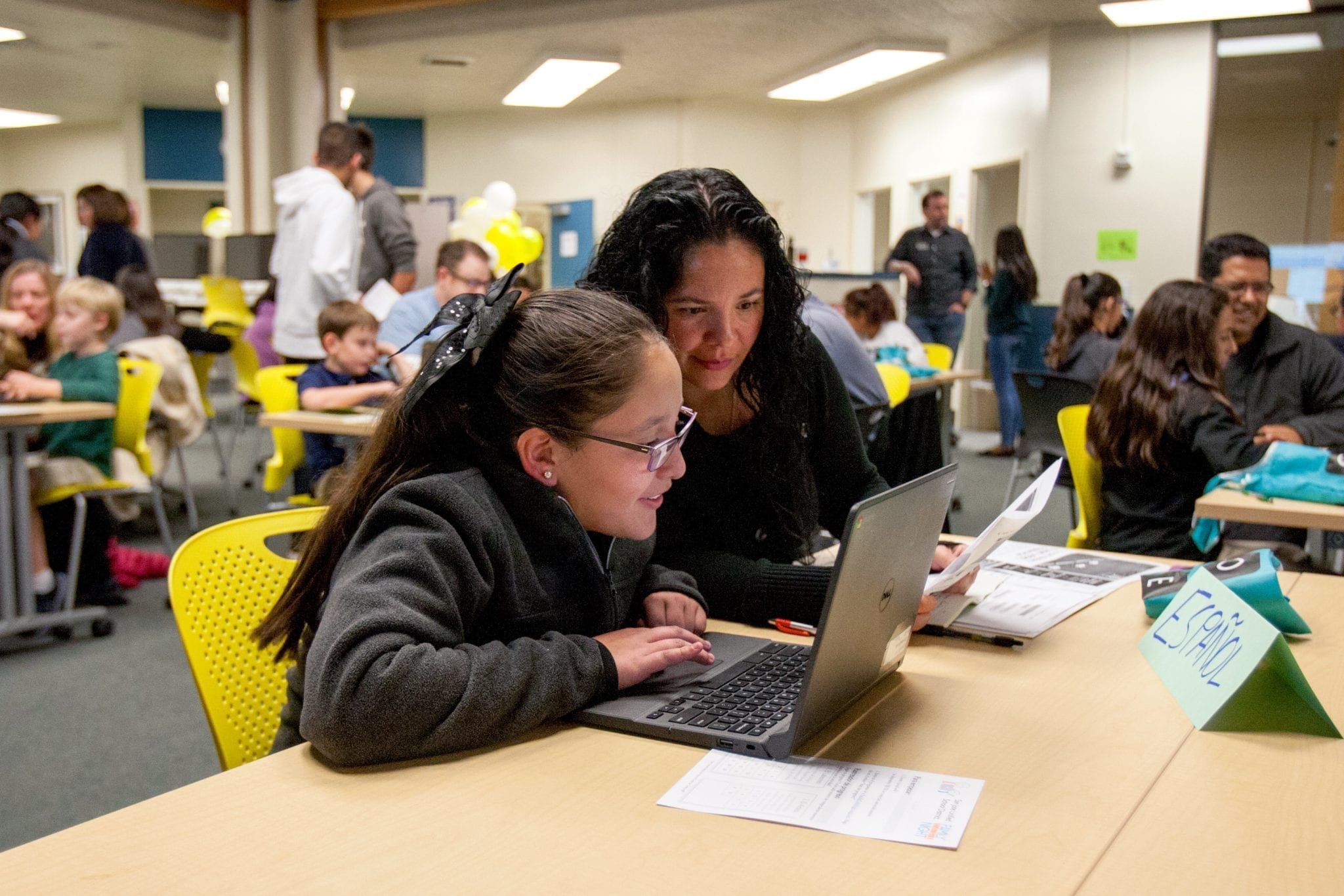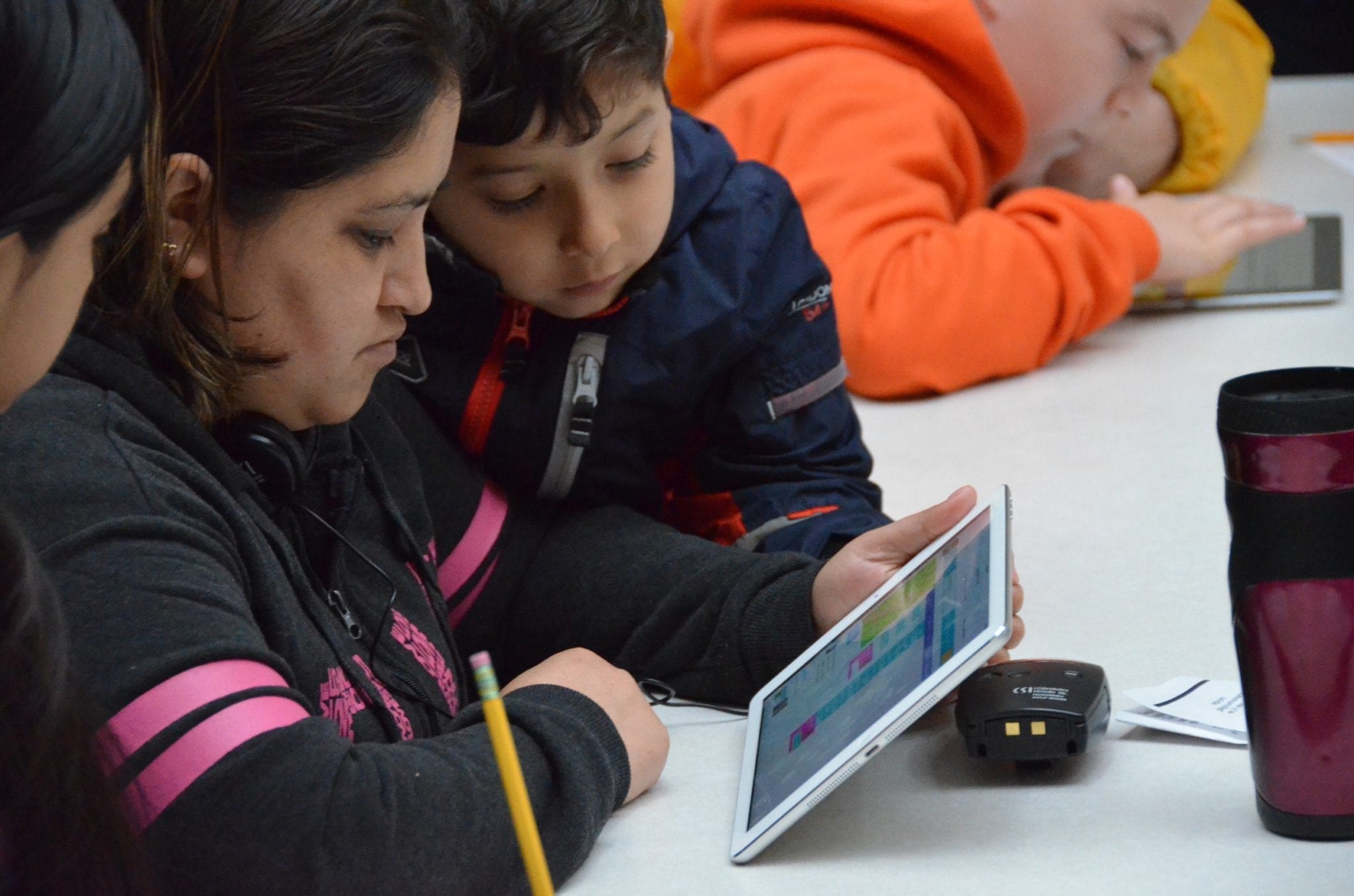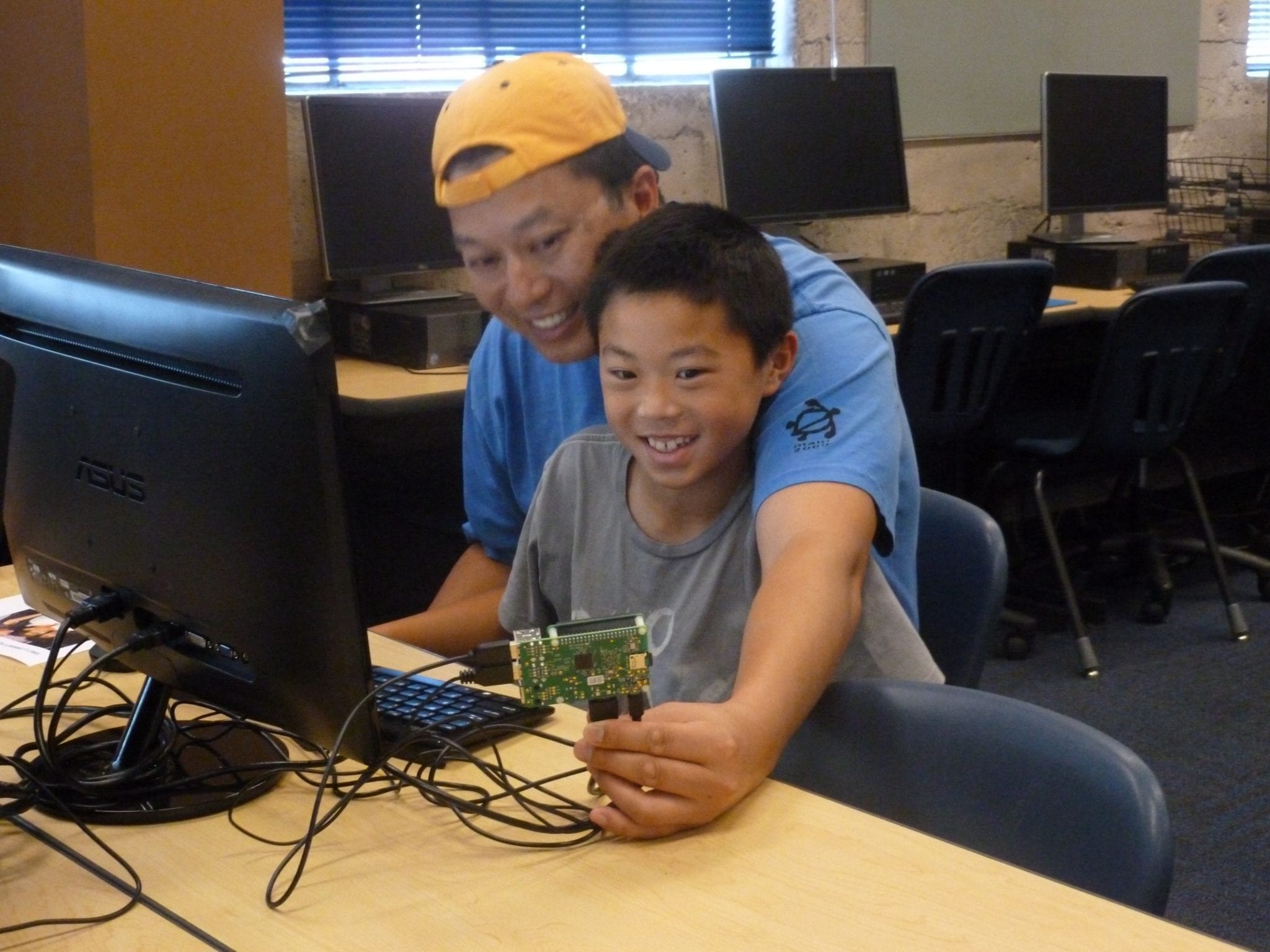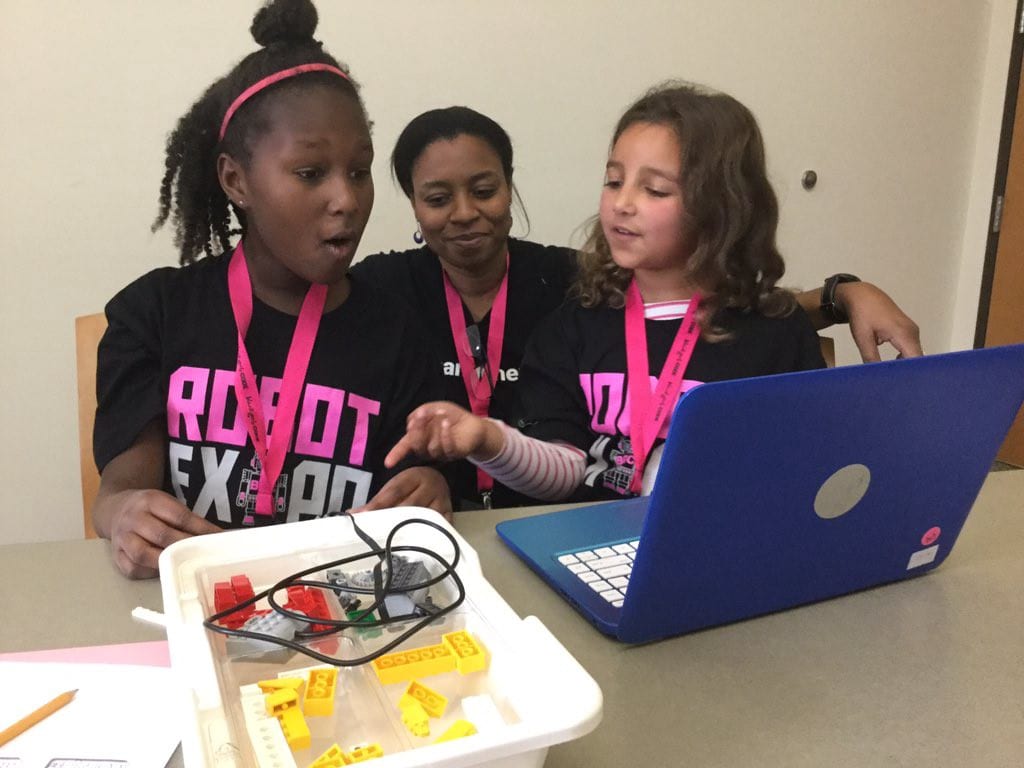By Linda Kekelis, Family Engagement Advisor

Photo Courtesy Family Code Night
Cheers to another successful Computer Science Education Week. What began as a one-hour coding challenge has expanded into a worldwide phenomenon with millions of kids taking part in Hour of Code™ in classrooms, afterschool programs, libraries, and worksites. Held the second week of December in honor of the birthday of Admiral Grace Murray Hopper (and my birthday too), who was a pioneer in computing, Hour of Code and Computer Science Education Week generate audacious aspirations and actions that inspire kids in computer science.
This year’s theme, Computer Science for Good, has been especially successful at broadening participation in computing. Here are a few of the exciting efforts with diverse and far-reaching impact. CS Education Week 2019 launched at the Santa Fe Indian School. Deaf Kids Code led an app development lesson via live video to deaf classes around the world. Infosys Foundation supported Digital NEST in hosting an agtech field trip to introduce sustainable and scalable technology careers in low income and rural communities in the Central Valley in California. A new season of SciGirls premiered with episodes that explore coding, designing, and programming, including a group of girls who are deaf and hearing impaired who coded software that “paints with music.” A superhero-themed game, SuperMe, coded by Chicago Public School students is the official video game of “I Love You So Much,” Chance the Rapper’s song with DJ Khaled.
I love these bright spots and can’t wait to see them take hold and expand into more. Here are three ideas for making Hour of Code into a year of possibilities.

Photo Courtesy Family Code Night
#1 Add family engagement into the mix
Many youth experience their Hour of Code at school. This means that one of the major influencers on a child’s learning–their family–is missing from the experience. Research shows that families have a significant impact on their children’s academic interests and outcomes and, especially for girls, play a big role in sparking their interest in computer science.
Imagine if family engagement was deeply tapped into as part of Hour of Code. Parents would see how coding expands their child’s confidence and maybe even their own. They would learn about career opportunities and how computer science aligns with their child’s creative and social interests. They would learn about classes and camps at school, public library, or community center where their child could advance their skills. If parents were actively engaged in Hour of Code, they would discover their superpower — that their encouragement matters most in their child’s sustained engagement in computer science.
There is still time to engage parents and guardians. Invite kids who participated in Hour of Code to share something they learned and something they want to know more about with their parents. Look to the digital postcards inspired by Heather Toomey Zimmerman for guidance and lessons learned to make effective links to home and family. Host a Family Code Night this winter or spring. Family Code Night provides resources to host the event along with Code On At Home, 40+ hours of games to continue at home.

Photo Courtesy Bay Area STEM Learning Ecosystem
#2 It takes an ecosystem: Build bridges to guide families on their STEM journey
After we ignite the interest of kids and parents, what’s next? Video games, afterschool programs, online tutorials, and summer camps. The list is endless with opportunities for parents to support their kids’ engagement in computer science. Knowing how to navigate through the myriad of resources and decide which are best for their child isn’t easy. It can be especially challenging for parents with less education and less experience with technology.
With support, youth and their families can find their way along their journey in computer science. In practice this takes program staff getting to know youth so they can advise parents on what their children show interest in and shine at and where they might go next to access programs and resources. It’s not as simple as handing parents a list of generic computer science programs. Think beyond being a provider of programs, to “serving as a guide and way-finding resource” for families.
CSforAll is helping 10 communities launch an ecosystem initiative to develop high quality, equitable computer science with support from Schmidt Futures. I encourage these EcoSystemsforCS as well as the STEM Learning Ecosystems to support family engagement and collectively move beyond random STEM programs to coordinated services for families across time and place. Be intentional and build a connected ecosystem to promote equity; be aware of what’s available, design programs that upon skill levels and different kinds of learners, and coordinate services to make them truly accessible to families.

Photo Courtesy Black Girls Code
#3 Step up for CSforAll: Take this call for action
Not all computer science opportunities are created equal. The report on computer science on access and equity from Kapor Center shines a light on the serious inequities in participation in computer science. While technology can be an equalizer, access to opportunities is often determined by gender, race, economics, ability, and geography.
For each of the groups who are underrepresented in computer science, there are programs doing right and defying the odds. Look to Youth Code Jam, Deaf Kids Code, and Tech Kids Unlimited for strategies to engage youth who are disabled. For models that empower girls check out Black Girls Code, Girls Who Code, and Native Girls Code. For youth in rural communities, Digital NEST and the College Board turn challenges into opportunities that increase access to courses and work experience in computer science.
As CS for All moves beyond more computer science, it’s time to reflect on what kinds of resources best help different communities realize their goals. The time is right for this work with the release of CS for What? Diverse Visions of Computer Science Education in Practice. This report can help us identify our values and better align practices with intended impacts. As we engage in this work, we are reminded to bring as many voices to the table to understand families’ interests and needs for learning computer science.
Imagine if every parent of every child who participated in Hour of Code is empowered in the coming year. STEM Next encourages collective effort and support for family engagement to broaden participation in computer science. Imagine that this year’s Hour of Code is only the beginning. What do you imagine?
Want to learn more about supporting families on their journey in computer science? I found the work of the following research+ practice groups insightful and inspirational and hope you do too.
Dixie Ching, Rafi Santo, Christopher Hoadley, & Kylie Peppler. Not just a blip in someone’s life: integrating brokering practices into out-of-school programming as a means of supporting and expanding youth futures.
Marti Louw, Nina Barbuto, & Kevin Crowley. Designing Learning Pathways in a Complex Learning Ecology: A Research Practice Partnership Focused on Parent Brokering.
William R. Penuel, Tiffany L. Clark, & Bronwyn Bevan. Infrastructures to Support Equitable STEM Learning Across Settings.
The ‘Hour of Code™’ is a nationwide initiative by Computer Science Education Week and Code.org to introduce millions of students to one hour of computer science and computer programming.
Linda Kekelis, Ph.D., is an advisor for The Family Engagement Project for STEM Next Opportunity Fund. She has devoted her lifetime to supporting families and educators in encouraging youth in STEM.
Follow Linda Kekelis on Twitter: https://twitter.com/LindaKekelis

